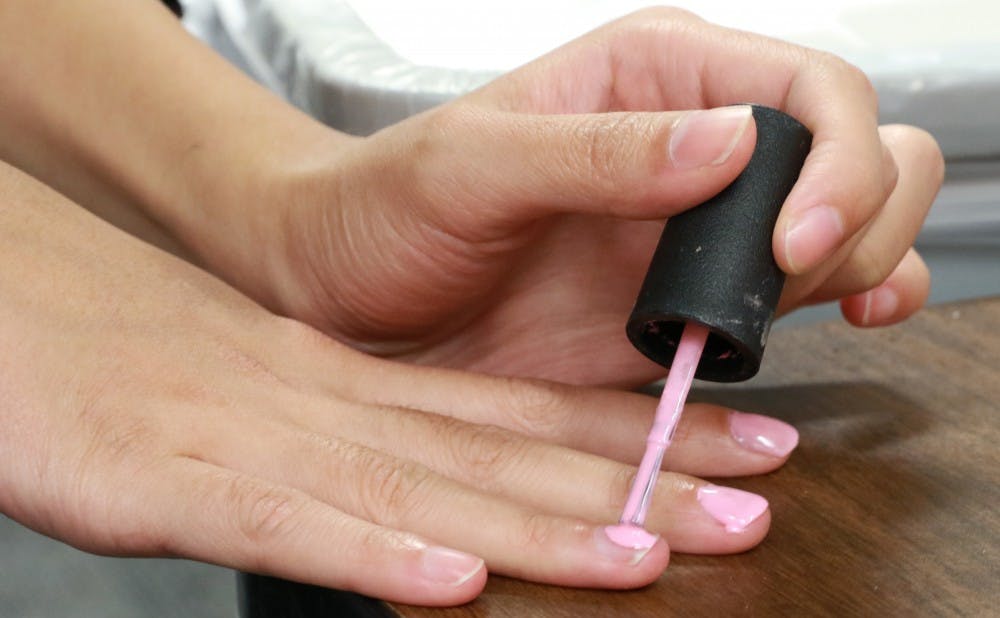Women using nail polish may be ingesting toxins, new research suggests.
A recent study by Duke researchers and the Environmental Working Group—a nonprofit organization dedicated to protecting human health and the environment—found evidence of a toxic nail polish chemical in the bodies of women who used popular nail polish brands. The researchers discovered traces of triphenyl phosphate, or TPHP—a suspected endocrine-disrupting chemical—in all of the study’s participants just 10 to 14 hours after they painted their nails. Kate Hoffman, a research scientist at the Nicholas School of the Environment, who co-authored the study, said that the study’s goal was to investigate the possibility of TPHP in personal care products.
“We wanted to find out how much and the degree of human exposure through using nail polish,” she said.
TPHP has been linked to changes in hormone levels including endocrine disruption, Hoffman said. In addition, previous studies in animals have found connections between the chemical and adverse developmental and reproductive problems.
Hoffman explained that her study, which involved 17 Duke students, consisted of two phases. In the first, participants provided a urine sample that researchers tested for diphenyl phosphate or DPHP—which forms when the body metabolizes TPHP. The women then painted their nails and provided another sample. After using the nail polish, Hoffman’s group found that the women’s DPHP levels were six or seven times higher than before.
However, her research group was uncertain if the heightened levels were the result of participants absorbing the chemicals through their nails or breathing in the fumes of the nail polish, she said.
To test this, Hoffman’s group conducted a second phase of the study in which the women wore synthetic gloves and painted fake nails attached to the gloves. She said that in this case, no higher levels of the metabolite of TPHP were found in the women’s urine afterward.
Hoffman explained that the idea for the study came from previous research she had done on TPHP, which found that higher levels of TPHP in women’s bodies than men’s.
“We thought it might be used in personal care products because women use more [of them] than men,” she said.
The group’s research found that not only did TPHP exist in many popular nail polish brands—such as Sally Hansen and OPI—but that several polishes did not list the chemical in their ingredients.
“If someone was concerned [about the presence of TPHP], it could be hard to avoid because they don’t know what’s in the nail polish that they’re applying,” she said.
She noted that the presence of TPHP in nail polish is particularly concerning because of how often many women paint their nails. In August 2014, Nails Magazine—a nail salon industry trade publication—reported that 97 percent of American girls ages 12 to 14 use nail products such as polish and that 14 percent of all teens and tweens use them daily, according to market surveys.
Several Duke students found the research results disturbing.
“I always kind of thought [about toxic chemicals] in nail polish remover, but I never considered it for nail polish itself,” sophomore Peyton Dilweg said. “Now I’ll be doing a little more research examining the contents of nail polish.”
Sophomore Megan Conroy said that she was always suspicious of nail polish’s chemical contents, adding she no longer plans to use it because “it’s not worth the risk.”
Hoffman said, however, that she does not believe the study’s findings will significantly affect such a widespread practice.
“It’s very unlikely people will stop painting their nails,” she said.

